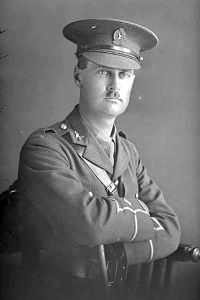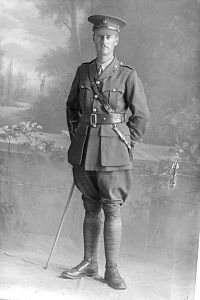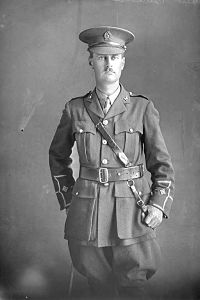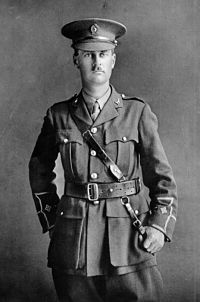WW1 Harold Dixon Buddle
Harold Dixon Buddle was born 10 August 1884, the younger son and third child of five children of the Thomas and Emma Buddle of 26 Victoria Avenue, Remuera, Auckland.
His grandfather the Reverend Thomas Buddle was one of the founders of the Methodist church in New Zealand, who had accompanied local Maori to the great Waikato feast at Remuera in May 1844. [1][2] Harold’s father Thomas Buddle was the senior partner in the law firm of Buddle, Richmond and Buddle, constituted in 1891.
Harold attended Auckland University College (now the University of Auckland) and before enlistment aged 31 years on 5 April 1916 was a self-employed solicitor in Remuera, Auckland.
He embarked on 16 Feb 1917 on the vessel ‘Navua’ and arrived on 26 April 1917 at Devonport, Devon, England as a Second Lieutenant with Reinforcements J Company of the New Zealand Rifle Brigade. The Navuan Nautilus described him as –
“J” COMPANY’S OFFICERS. Our officers are all good men, And by us much esteemed, We hope we shall not lose them – A think not to be dreamed. The first is Mr. Forrest, O.C. beyond compare, And though he keeps us up to scratch, Our welfare is his care. There’s Mr. Luke, the Adjutant, 36 Platoon’s Commander, We’re jolly glad he has the job, Though don’t desire to pander. Next comes Mr. Buddle, The canteen is his care, A right good fellow for the job, And we’re glad he’s there. The fourth is Mr. Larsen, In charge of 33, And though he isn’t with us now, No doubt he soon will be. C. M. N i g h t i n g a l e, “J ” Coy. [3]
Harold was seriously wounded in the head and shoulders on 12 October 1917 in the Passchendaele campaign in France. Harold was hospitalised in Rouen, France on 26 October 1917 to 7 November 1917 and then transferred to England until 10 August 1918, where he was treated at the Queen Mary’s Hospital ‘Frognal’ Sidcup in Kent, England for his facial and skull injuries. He was operated on by Harold Gillies who was a founder of modern plastic surgery in England and New Zealand, and also a member and benefactor of the Auckland Institute and Museum. [4]
Queen Mary’s Hospital was a purpose-built built facility for soldiers with facial injuries, which opened in July 1917 with around 300 beds. Its capacity was quickly increased to 560 beds, but eventually nearby hospitals and private houses were also pressed into service. Some of the benches in Sidcup were painted blue, indicating that they were for patient use only – and to warn the public that they might be occupied by someone who was distressing to look at. Harold Gillies was in command of the hospital and decided to open it to soldiers and staff from Britain’s dominions, and to divide it into units. Harold Dixon Buddle was awarded the British War Medal (1914-1920) and the Victory Medal. [5] He never married and died at the age of 77 on 10 July 1961 of a heart attack in Auckland, New Zealand. He was cremated at Purewa Cemetery and Crematorium, Meadowbank, Auckland. His ashes were spread at sea, near Whangaparoa.



